Daniel Chen
Imageless Contraband Detection Using a Millimeter-Wave Dynamic Antenna Array via Spatial Fourier Domain Sampling
Jun 09, 2024Abstract:We demonstrate an imageless method of concealed contraband detection using a real-time 75 GHz rotationally dynamic antenna array. The array measures information in the two-dimensional Fourier domain and captures a set of samples that is sufficient for detecting concealed objects yet insufficient for generating full image, thereby preserving the privacy of screened subjects. The small set of Fourier samples contains sharp spatial frequency features in the Fourier domain which correspond to sharp edges of man-made objects such as handguns. We evaluate a set of classification methods: threshold-based, K-nearest neighbor, and support vector machine using radial basis function; all operating on arithmetic features directly extracted from the sampled Fourier-domain responses measured by a dynamically rotating millimeter-wave active interferometer. Noise transmitters are used to produce thermal-like radiation from scenes, enabling direct Fourier-domain sampling, while the rotational dynamics circularly sample the two-dimensional Fourier domain, capturing the sharp-edge induced responses. We experimentally demonstrate the detection of concealed metallic gun-shape object beneath clothing on a real person in a laboratory environment and achieved an accuracy and F1-score both at 0.986. The presented technique not only prevents image formation due to efficient Fourier-domain space sub-sampling but also requires only 211 ms from measurement to decision.
Semi-automated extraction of research topics and trends from NCI funding in radiological sciences from 2000-2020
Jun 22, 2023



Abstract:Investigators, funders, and the public desire knowledge on topics and trends in publicly funded research but current efforts in manual categorization are limited in scale and understanding. We developed a semi-automated approach to extract and name research topics, and applied this to \$1.9B of NCI funding over 21 years in the radiological sciences to determine micro- and macro-scale research topics and funding trends. Our method relies on sequential clustering of existing biomedical-based word embeddings, naming using subject matter experts, and visualization to discover trends at a macroscopic scale above individual topics. We present results using 15 and 60 cluster topics, where we found that 2D projection of grant embeddings reveals two dominant axes: physics-biology and therapeutic-diagnostic. For our dataset, we found that funding for therapeutics- and physics-based research have outpaced diagnostics- and biology-based research, respectively. We hope these results may (1) give insight to funders on the appropriateness of their funding allocation, (2) assist investigators in contextualizing their work and explore neighboring research domains, and (3) allow the public to review where their tax dollars are being allocated.
Explicitly Solvable Continuous-time Inference for Partially Observed Markov Processes
Jan 02, 2023Abstract:Many natural and engineered systems can be modeled as discrete state Markov processes. Often, only a subset of states are directly observable. Inferring the conditional probability that a system occupies a particular hidden state, given the partial observation, is a problem with broad application. In this paper, we introduce a continuous-time formulation of the sum-product algorithm, which is a well-known discrete-time method for finding the hidden states' conditional probabilities, given a set of finite, discrete-time observations. From our new formulation, we can explicitly solve for the conditional probability of occupying any state, given the transition rates and observations within a finite time window. We apply our algorithm to a realistic model of the cystic fibrosis transmembrane conductance regulator (CFTR) protein for exact inference of the conditional occupancy probability, given a finite time series of partial observations.
Quantum-Inspired Classical Algorithm for Principal Component Regression
Oct 16, 2020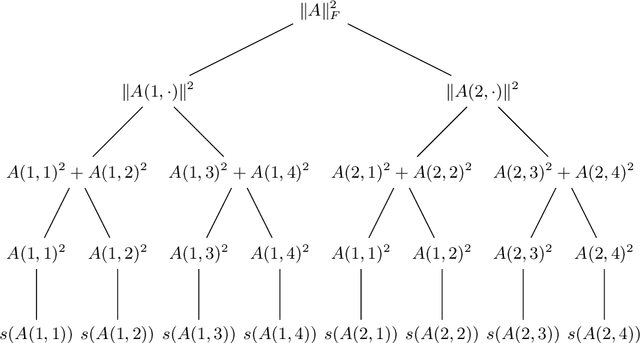
Abstract:This paper presents a sublinear classical algorithm for principal component regression. The algorithm uses quantum-inspired linear algebra, an idea developed by Tang. Using this technique, her algorithm for recommendation systems achieved runtime only polynomially slower than its quantum counterpart. Her work was quickly adapted to solve many other problems in sublinear time complexity. In this work, we developed an algorithm for principal component regression that runs in time polylogarithmic to the number of data points, an exponential speed up over the state-of-the-art algorithm, under the mild assumption that the input is given in some data structure that supports a norm-based sampling procedure. This exponential speed up allows for potential applications in much larger data sets.
Systems-theoretic Safety Assessment of Robotic Telesurgical Systems
Jul 08, 2015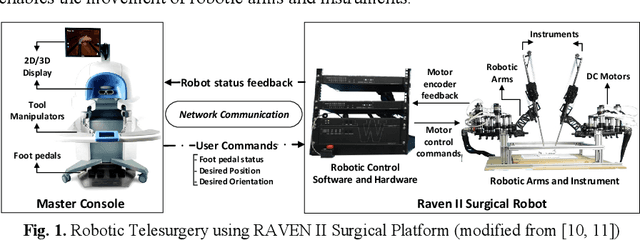
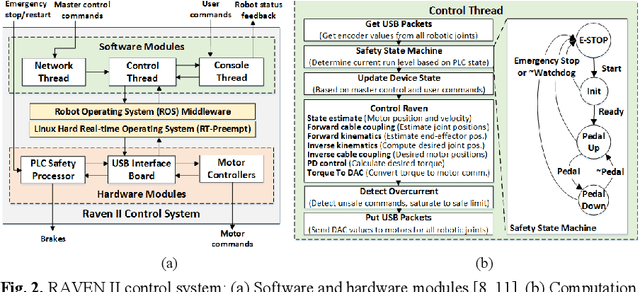
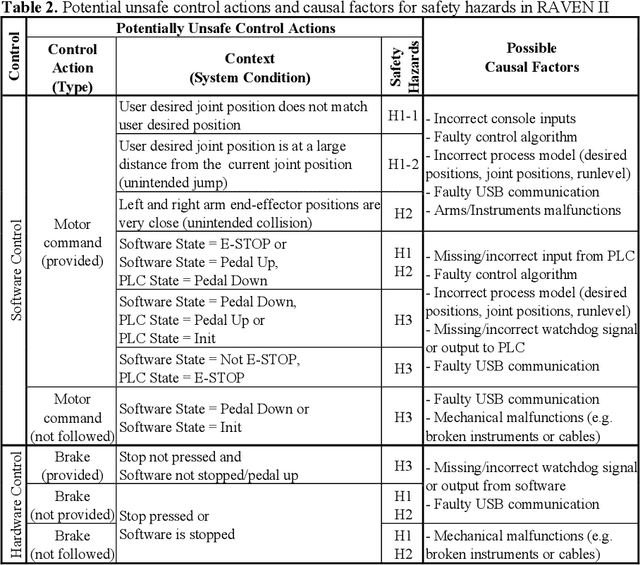
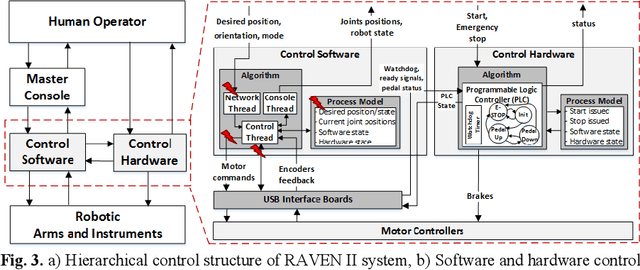
Abstract:Robotic telesurgical systems are one of the most complex medical cyber-physical systems on the market, and have been used in over 1.75 million procedures during the last decade. Despite significant improvements in design of robotic surgical systems through the years, there have been ongoing occurrences of safety incidents during procedures that negatively impact patients. This paper presents an approach for systems-theoretic safety assessment of robotic telesurgical systems using software-implemented fault-injection. We used a systemstheoretic hazard analysis technique (STPA) to identify the potential safety hazard scenarios and their contributing causes in RAVEN II robot, an open-source robotic surgical platform. We integrated the robot control software with a softwareimplemented fault-injection engine which measures the resilience of the system to the identified safety hazard scenarios by automatically inserting faults into different parts of the robot control software. Representative hazard scenarios from real robotic surgery incidents reported to the U.S. Food and Drug Administration (FDA) MAUDE database were used to demonstrate the feasibility of the proposed approach for safety-based design of robotic telesurgical systems.
 Add to Chrome
Add to Chrome Add to Firefox
Add to Firefox Add to Edge
Add to Edge